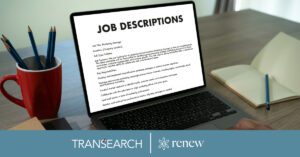Do you want to streamline your executive search process and secure top talent swiftly? Follow these expert tips to ensure a seamless and efficient C-level executive search that aligns with your organization’s unique needs.
1. Employ Remote Interviewing to Reduce Travel Time
Remote interviewing can significantly reduce the time and costs associated with travel. Utilize video conferencing tools for conducting initial interviews to swiftly assess candidates without geographical constraints. Here are the steps for successful remote interviewing:
-
Select a reliable video conferencing tool such as Zoom, Microsoft Teams, and Google Meet.
-
Ensure both interviewers and candidates have access to the chosen platform.
-
Leverage integrated calendar tools for sending invites and scheduling meetings.
-
Distribute a list of questions to all interviewers beforehand.
-
Perform a test run to ensure audio, video, and internet connection quality are optimal.
-
If possible, record the interviews for subsequent review and comparison.
2. Schedule Interview Blocks for Technical Interviewers
Coordinate schedules to create blocks of time where technical interviewers can meet multiple candidates consecutively. This method ensures that interviewers are focused and efficient, reducing delays in the process.
3. Restrict Communication Channels for a Centralized Point of Contact
Having a single point of contact for all communications streamlines the process. This person can manage scheduling, feedback, and updates, preventing miscommunication and ensuring all parties are on the same page.
4. Establish Clear Job Description and Objectives
A well-defined job description with clear objectives is crucial for attracting the right candidates. Expectations and responsibilities should be explicitly stated to prevent confusion and attract those best suited for the role.
Steps to create a clear job description include defining key responsibilities by listing the main tasks and duties the candidate will be responsible for.
-
Set clear objectives by outlining the specific goals the candidate is expected to achieve.
-
Specify required skills and qualifications by detailing the necessary skills, experience, and qualifications.
-
Highlight company culture to ensure alignment with potential candidates.
-
Provide growth opportunities by mentioning potential career growth and development within the organization.
-
Finally, regularly review and revise the job description to reflect any changes.
5. Maintain an Open Mind
While experience is crucial, flexibility in candidate requirements can lead to discovering exceptional talent. Consider diverse backgrounds and unconventional career paths that may bring unique strengths to your leadership team.
6. Set a Maximum of 3 Interviews per Process
Limit the number of interviews each candidate undergoes to three. This keeps the process efficient, respects the candidate’s time, and allows thorough evaluation.
7. Assign Specific Questions to Different Team Members
Assigning specific areas of questioning to different interviewers ensures a comprehensive assessment without redundancy. Each interviewer can focus on their area of expertise, providing a well-rounded evaluation of the candidate.
8. Prioritize Cultural Fit
Use tools like the TRANSEARCH Orxestra® Method to assess cultural fit. This method evaluates six dimensions of fit to ensure candidates align with your organization’s values and culture, leading to longer and more successful tenures.
9. Use Data-Driven Tools
Leverage data-driven tools to evaluate candidates objectively. Tools like Hogan assessments provide insights into a candidate’s personality and leadership potential, ensuring you make informed decisions.
10. Automate Feedback Channels
Implement an automated feedback system to gather and share interviewer evaluations quickly. This not only speeds up the decision-making process but also ensures that all feedback is recorded systematically.
Streamline Your Executive Searches with TRANSEARCH USA
By incorporating these strategies, you can streamline your C-level executive search process, ensuring it runs smoothly and efficiently. This approach not only saves time but also increases the likelihood of finding the perfect fit for your organization. Schedule a consultation with TRANSEARCH USA today to leverage our expertise and innovative methods in executive search.
Contact us now to experience the difference and ensure your next executive search is a success!





































































